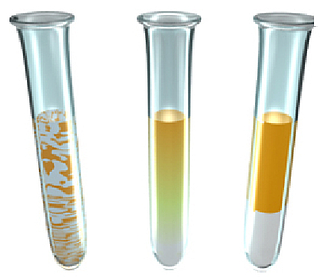
Measuring interfacial tension is effective in understanding how two or more immiscible liquids are, or can be - emulsified.
Immiscible liquids by definition are liquids incapable of being mixed to form a homogeneous substance. Oil and water are immiscible. We can act upon these immiscible liquids by emulsifying them into a single homogeneous substance referred to as an emulsion. Emulsifying two liquids that ordinarily do not mix well -such as oil and water- causes tiny droplets from one liquid to be suspended in the other liquid - forming an emulsion.
We refer to a liquid as a phase. Where one phase meets another phase (liquid to liquid - oil to water for example) a boundary forms between them and an imbalance of forces occur. The amount of the imbalance can attribute to an energy at the point where the two phases meet. We refer to this energy as surface free energy where a measure of energy/area or interfacial tension as force/length can be observed. Increasing the interface area by dispersing one liquid phase into another by emulsification or the use of a surfactant for example will result in a lower interfacial tension. The Interfacial Tension is measured in Dynes per Centimeter using an instrument known as a tensiometer.
Understanding these relationships exist and measuring them under different testing conditions is important to understanding how many liquid products interact. Knowing the interfacial tension becomes more important for researchers on how best to pursue future R&D as well as for production managers to maintain quality control for existing products used every day. Some examples of industry where effectively measuring and monitoring emulsifications is important include:
- Food Products
- Beverages
- Dairy Products
- Cosmetics
- Chemicals
- Pharmaceuticals




